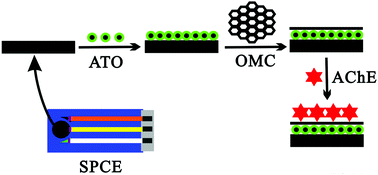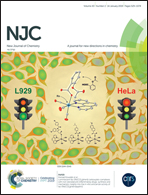Acetylcholinesterase biosensor modified with ATO/OMC for detecting organophosphorus pesticides
Abstract
This work demonstrates the sensitive amperometric determination of organophosphorus pesticides (OPs) on screen-printed electrodes (SPEs) modified with antimony tin oxide-chitosan (ATO-CS) and ordered mesoporous carbon-chitosan (OMC-CS) composite nanomaterials. ATO could effectively promote electron transfer and enhance the electrochemical reaction. OMC had a larger specific surface area, so it could effectively fix more AChE and improve the sensitivity of the sensor. Thus, ATO-CS and OMC-CS were modified onto the SPE layer-by-layer, which could improve the electrochemical response, increase the fixed amount of the enzyme on the electrode, and, accordingly, the sensitivity of the biosensor was obviously improved. The electrochemical behavior of the AChE biosensor was studied by cyclic voltammetry (CV) and differential pulse voltammetry (DPV) techniques. Under optimum conditions, with chlorpyrifos and methamidophos as the model compounds, the inhibition of AChE activity based on OPs was detected. The proposed acetylcholinesterase biosensor displayed an excellent analytical performance with great reproducibility. The detection limits for chlorpyrifos and methamidophos were 0.01 μg L−1 and 1 μg L−1, respectively. In addition, the as-prepared acetylcholinesterase biosensor was successfully utilized for the determination of OPs in actual samples.



 Please wait while we load your content...
Please wait while we load your content...